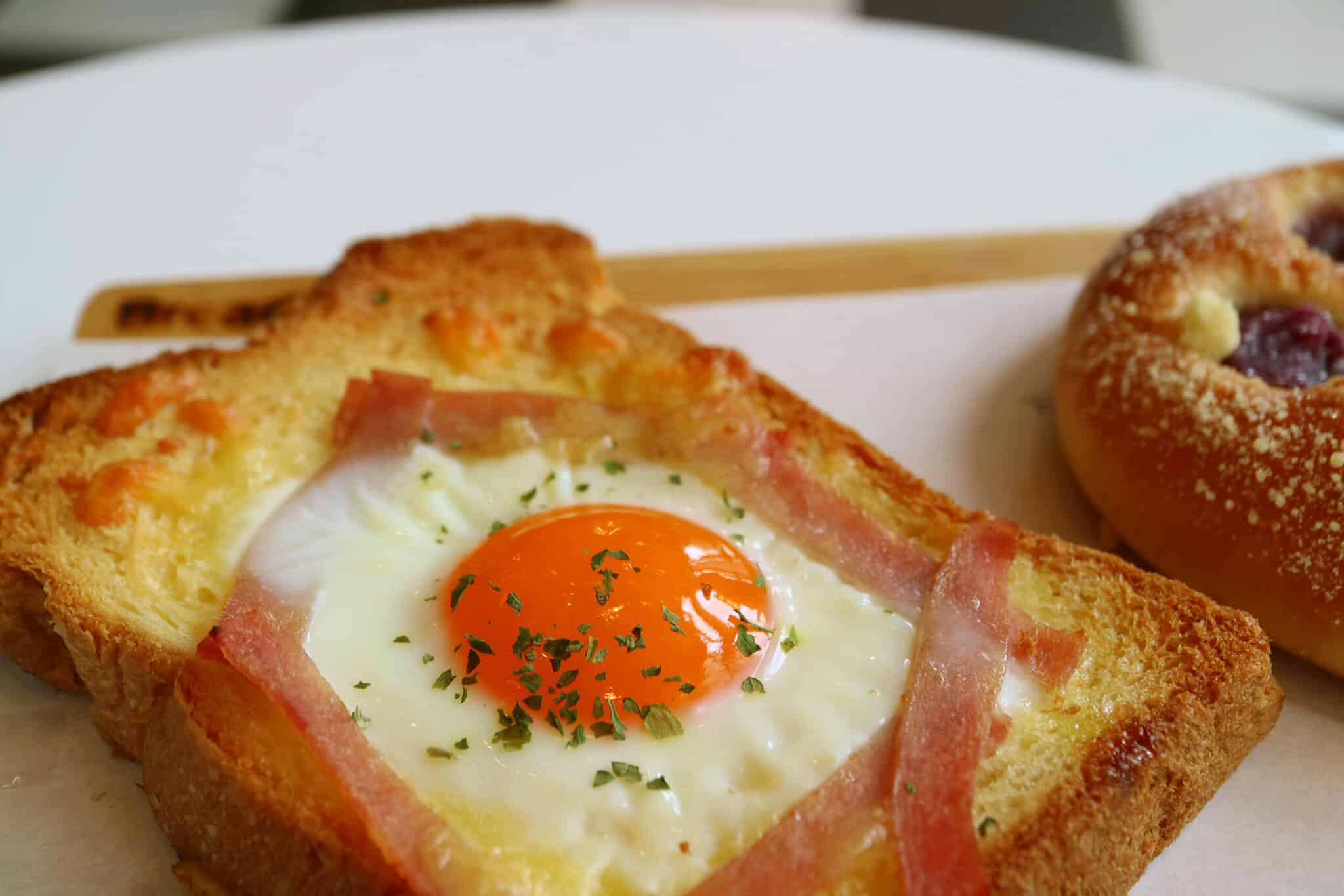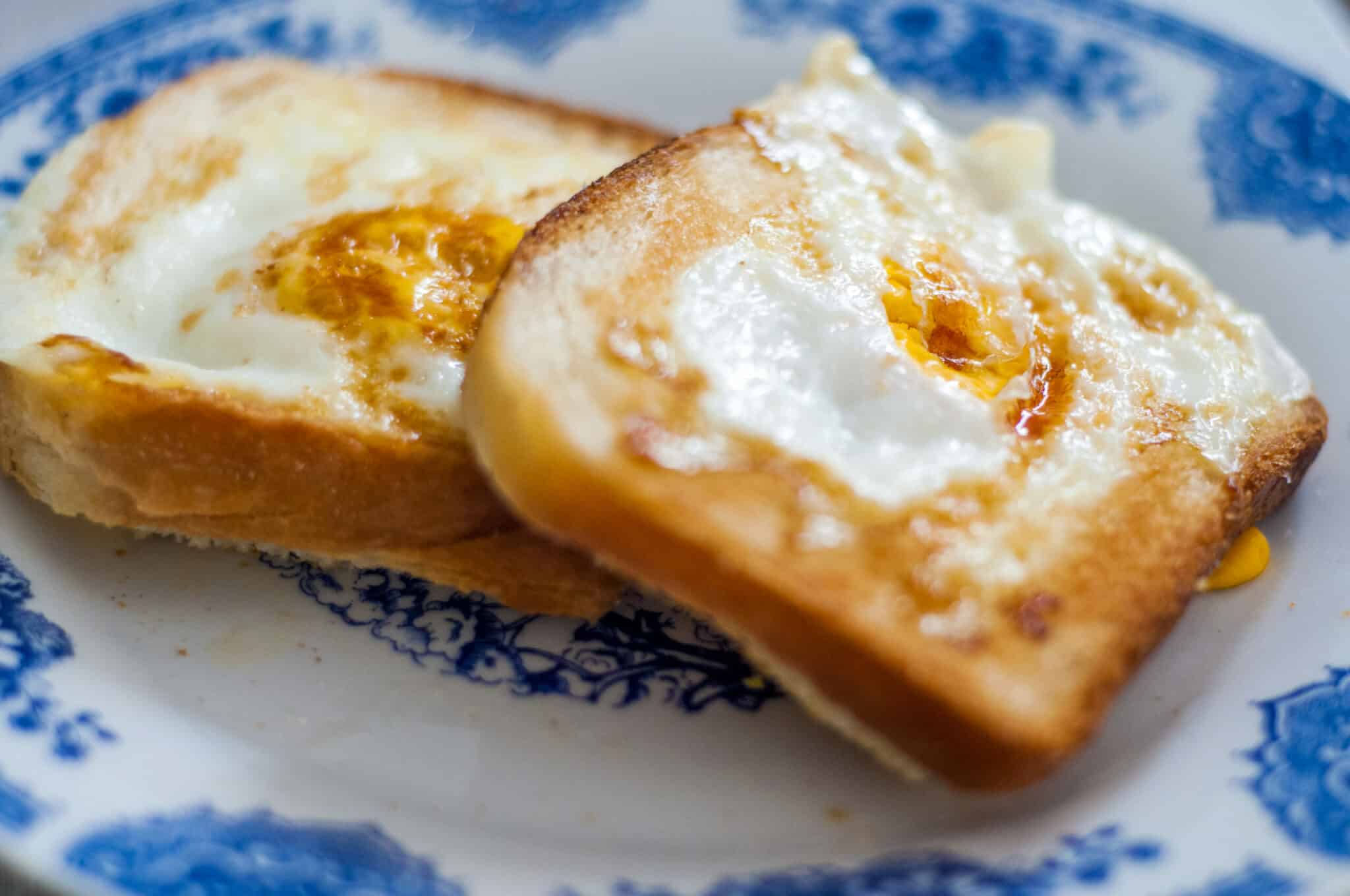French toast is simply bread that has been soaked in liquid (most commonly milk and egg) before being fried in a frying pan. It is far from a new invention. Instead, it’s possible that some form of it dates back to the Romans.
French toast isn’t just a French specialty (nor is it specifically French). In truth, several countries have their own versions and names, such as the Poor Knights (of Windsor) in the United Kingdom or pain perdu (lost bread) in France. They’re called wentelteefjes in Dutch, which probably refers to the fact that they need to be turned over frequently.

Soy milk is a popular egg alternative for French toast. You can also use nutritional yeast, which is a deactivated form of yeast, to replace this liquid. Other options for making an eggless custard include using Brioche or challah bread. You can make an egg-free recipe using one of the ways given below if you can’t locate one. Remember that you may always use an egg substitute while making French toast!
Some substitutes that can be used instead of eggs for french toast
Soy milk
In recipes that call for eggs, soy milk is a good replacement. It is thicker than rice or almond milk, making it an excellent option for French toast. To lengthen its shelf life, soy milk contains thickeners that imitate the volume of milk. In recipes that call for egg, you can use soy milk for milk in a 1:1 ratio. You can also use butter instead of oil. Place the bread slices in the pan after dipping them in the egg mixture.
Nutritional yeast
Nutritional yeast can be used to impart a deep cheese flavour to a variety of foods, including breakfast. Deactivated yeast can also be used as a topping or condiment on roasted vegetables. Nutritional yeast is recommended by several health professionals and practitioners for its health advantages. Nutritional yeast can be used to season popcorn or roasted cauliflower, in addition to imparting a delicious flavour to your breakfast meals.
Another advantage of nutritional yeast is that it may be used to replace cheese in a variety of dishes. It’s utilised in savoury meals as well as as a thickening and has a cheesy flavour that’s similar to cheese. It’s also high in B12, which is necessary for brain function and infection resistance. A spoonful of nutritional yeast has nearly six times the daily B12 needed.
Custard powder
Combine 1/4 cup milk and the custard powder to make an eggless custard for french toast. Bring the liquid to a boil, then remove from the heat. Cook for another minute after adding the vanilla extract and a pinch of salt. After that, dip a slice of bread into the sauce and set it aside in a serving dish. There should be no lumps in the custard.
To make an eggless custard for french toast, combine all of the ingredients in a mixing bowl. Heavy cream, milk, cinnamon, and custard powder can all be added. Over medium-high heat, heat a large skillet. Dip the bread in the custard mix once the butter is heated, but don’t let it sit. The bread should be moist but not soggy. For a delightful breakfast, dust with powdered sugar or serve with fresh fruit.
Brioche or challah bread
Brioche or challah bread is a good substitute for eggs in french toast recipes. These dense, yeast-based breads are frequently linked to French pastries and viennoiserie. They have a similar texture and flavour, but there are a few important variances. Challah, for example, is usually served plain, whereas brioche is sweet and loaded with butter. As a result, many people substitute brioche for eggs in french toast.
You can buy brioche in a variety of shapes, including buns, to prepare it. Because the bread will not break when cooking, soak it for at least 30 minutes before cooking. You can make challah with an egg-free bread prepared by braiding dough. With its braided structure and huge surface area for soaking, this bread is similar to brioche.
Coconut milk
You’ve come to the right place if you’ve ever wondered how to make French toast without milk. Without dairy milk, that is. This simple dairy-free french toast dish is essentially regular French toast with the addition of thick and creamy canned coconut milk in place of the dairy milk. Coconut milk is another wonderful dairy-free and vegan-friendly alternative to egg in French toast.
You’ll need to thicken your coconut milk with cornstarch or flour, just like you would with dairy milk. Coconut milk gives your French toast a slight coconut flavour, which is a nice thing if you enjoy coconut!
What makes nutritional yeast so appealing in eggless recipes?
Nutritional yeast is the secret ingredient. It has been described as having a cheesy, nutty, savoury, and “umami” flavour. It lends an eggy flavour to recipes, and its nutty flavour complements the flavours of other ingredients. Nutritional yeast is an important ingredient in eggless recipes, and the perfect amount may transform a bland dish into a delectable treat.
Nutritional Yeast is an excellent egg alternative for French toast. Its fortified flavour is fantastic in baked products, and you can make a corn-free version by using cornstarch. Cornstarch’s disadvantage is that it lacks egg taste, although nutritional yeast helps to compensate. If you prefer a more traditional egg substitute, black salt, also known as Kala Namak, can be used. Its high sulphur level makes it an excellent seasoning for vegan egg recipes, and only 1/4 teaspoon is required to impart a significant quantity of taste.
Why does french toast need egg?
First and foremost, we require that liquid. The liquid will soften the bread and give it a more rich texture. Then we’ll need something to help the liquid set. You wouldn’t get that wonderful crunchy coating if you merely dipped bread in water and fried it; instead, you’d probably wind up with soggy bread. Finally, we can enhance the flavour by adding spices, sweetness, and a darker brown hue.
It’s something that eggs excel at. When eggs are heated, their proteins solidify, firming up the liquids in the bread. Furthermore, eggs add lipids for richness and do not mask flavours. If you don’t whisk the egg thoroughly before adding it to the other liquids, you’ll end up with chunks of cooked egg on the outside of your French toast that haven’t been well absorbed.
You can also use other ‘binders’ instead of eggs. Corn starch is a regularly utilised technique. Corn starch may easily be whisked into your liquid (start with a little amount of liquid to avoid clumping). When heated, corn starch absorbs and holds liquid, making it ideal for binding liquid (like we do when preparing eggless ice cream or cake!). Corn starch has the disadvantage of masking flavours, so don’t use too much.
How do you make french toast not soggy?
If you want non-soggy toast, your batter should be more egg-y than milk-y. Serve with butter, powdered sugar, and fresh berries, or pour with maple syrup for the best breakfast on the planet. There are a few frequent blunders that can completely ruin your french toast. If you heat your griddle too hot, the outsides will burn and the insides will become mushy. Over medium-low heat, preheat a large skillet or griddle.
If your griddle has a temperature control, I set it to 250 degrees. Moreover, dip one side of the bread into the batter. Replace the opposite side and repeat. You don’t need to soak the bread; simply coat each side with batter. French toast is best served with a dollop of butter, a dusting of powdered sugar, and pure maple syrup.
What is the trick to french toast?
- Allow the bread to become stale
French toast is traditionally made using stale bread, thus the moniker “pain perdu,” which means “lost bread” in French. Allow new bread slices to dry for at least a day, if not many days. A little stale, dry slice of bread stands up far better to an egg batter plunge than a soft, new one.
- Allow the bread pieces to soak in the egg batter for many hours
A couple of hours in the fridge, or perhaps overnight, is required for a frothy smooth mix.
- Use a crunchy garnish
To produce a pretty little crust on top of your french toast, use shredded coconut or bread crumbs. Cook into a chewy, crispy golden brown crust by pressing it on one or both sides of the bread like breading.
- Challah bread is ideal
One of the most important ingredients is thickly cut challah bread. It produces the only authentic French Toast, crunchy on the exterior and soft on the inside.
- Cook it on the stove and in the oven
Use a cast iron skillet with plenty of butter. Toast moistened bread slices till golden brown on both sides over medium high heat, then place to a baking tray and bake.
- Top with orange or lime zest
This gives your french toast a wonderful off-shot of the fruit’s flavour. Everyone will remark on how delicious your french toast is, but they won’t be able to pinpoint why. That’s it. Use a zester or a vegetable peeler to peel the fruit once it has been rinsed.
- Experiment with different toppings
Serve your french toast with brie or mascarpone cheese and fruit such caramelised pears, peaches, fresh strawberries, bananas, raspberries, and so on. Experimenting and having fun with food is an important component of cooking.
Is it ok to eat soggy french toast?
It’s a waste of time to eat soggy french toast. Because French toast is made with raw eggs and milk, it may not have been thoroughly cooked. Salmonella can be carried via raw eggs, and bacteria multiply quicker in milk.
No one enjoys soggy bread, whether it’s French toast or not. The ideal French toast is crispy on the outside and creamy and fluffy on the interior. This dish, as wonderful as it is, demands patience and caution because there are many faults that can ruin your dish and leave it mushy.
You should avoid eating undercooked french toast because you run the risk of getting food poisoning. To ensure optimum cooking, French toast should be cooked on medium to low heat. Cook for at least 4 to 5 minutes on each side. The end product should be a wonderful golden brown tint for you to enjoy.
Conclusion
There’s no need to be afraid, whatever the reason. There are several excellent egg replacements that can be used to produce delicious French toast.
One of the most delicious breakfast delights is French toast! My entire family enjoys handmade French toast, and because I have extended family members who can not eat eggs, I’ve struggled to find a way to replace them while still preserving the excellent flavour and texture we all like. French toast is crispy on the outside and chewy on the inside, thanks to the addition of eggs. When we eliminate eggs, we must replace them with something that has a similar texture and flavour.






